
Helena Petrovna Blavatsky, often known as Madame Blavatsky, was a Russian and American mystic and author who co-founded the Theosophical Society in 1875. She gained an international following as the leading theoretician of Theosophy.
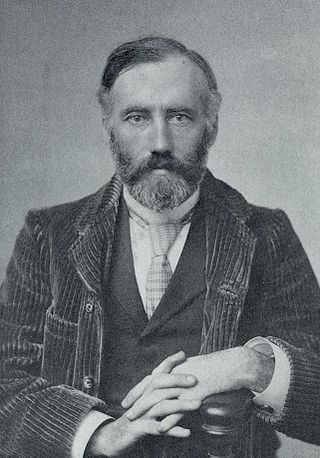
William Quan Judge was an Irish-American mystic, esotericist, and occultist, and one of the founders of the original Theosophical Society. He was born in Dublin, Ireland. When he was 13 years old, his family emigrated to the United States. He became a naturalized citizen of the US at age 21 and passed the New York state bar exam, specializing in commercial law.

The Theosophical Society is the organizational body of Theosophy, an esoteric new religious movement. It was founded in New York City, U.S. in 1875. Among its founders were Helena Blavatsky, a Russian mystic and the principal thinker of the Theosophy movement, and Henry Steel Olcott, the society's first president. It draws upon a wide array of influences among them older European philosophies and movements such as Neoplatonism and occultism, as well as parts of Asian religious traditions such as Hinduism, Buddhism, and Islam.

The Theosophical Society (Pasadena) is a branch of Theosophy based in Pasadena, California. It claims to be the successor organization to the original Theosophical Society founded by Helena Petrovna Blavatsky and others in 1875 in New York City. Currently is the second largest Theosophical group in members and international reach after the Theosophical Society Adyar.

Morya, also spelt Maurya, is one of the "Masters of the Ancient Wisdom" within modern Theosophical beliefs. He is believed by followers of Theosophism to be one of the Mahatmas who inspired the founding of the Theosophical Society and was engaged in a correspondence with two English Theosophists living in India, A. P. Sinnett and A. O. Hume. The correspondence was published in 1923 by A. Trevor Barker, in the book The Mahatma Letters to A. P. Sinnett.

Koot Hoomi is said to be one of the Mahatmas that inspired the founding of the Theosophical Society in 1875. In Theosophy it is believed that he engaged in a correspondence with two English Theosophists living in India, A. P. Sinnett and A. O. Hume, which correspondence was published in the book The Mahatma Letters to A. P. Sinnett.

The Mahatma Letters to A.P. Sinnett is a book published in 1923 by A. Trevor Barker. (ISBN 1-55700-086-7) According to Theosophical teachings, the letters were written between 1880 and 1884 by Koot Hoomi and Morya to A. P. Sinnett. The letters were previously quoted in several theosophical books, but not published in full. The letters were important to the movement due to their discussions on the theosophical cosmos and spiritual hierarchy. From 1939, the original letters were in the possession of the British Museum but later the British Library.

Neo-Theosophy is a term, originally derogatory, used by the followers of Helena Blavatsky to denominate the system of Theosophical ideas expounded by Annie Besant and Charles Webster Leadbeater following the death of Madame Blavatsky in 1891. This material differed in major respects from Blavatsky's original presentation, but it is accepted as genuinely Theosophical by many Theosophists around the world.
The Blavatsky Lodge, officially The Blavatsky Lodge of the Theosophical Society, was an English Theosophical Society founded by Helena Blavatsky and 13 other members.

The Coulomb Affair was a conflict between Emma and Alexis Coulomb, on one side, and Helena Blavatsky and the Theosophical Society, on the other.
Vernon George Wentworth Harrison was a president of the Royal Photographic Society, and a professional "research worker of disputed documents".

Constance Georgina Louise Wachtmeister, known as Countess Wachtmeister, was a prominent theosophist, a close friend of Helena Blavatsky.
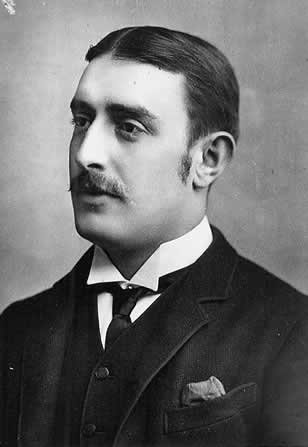
William Eglinton (1857–1933), also known as William Eglington was a British spiritualist medium who was exposed as a fraud.
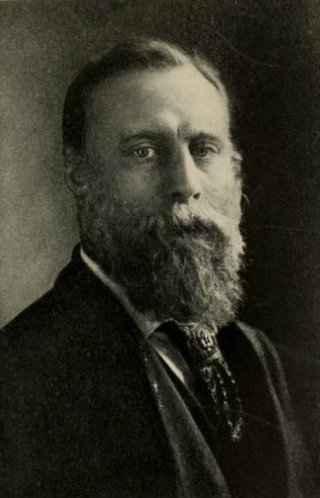
Richard Hodgson was an Australian-born psychical researcher who investigated spiritualist mediums such as Eusapia Palladino and Leonora Piper. During his later life, Hodgson became a spiritualist medium himself and believed to be in communication with spirits.

Within the system of Theosophy, developed by occultist Helena Blavatsky and others since the second half of the 19th century, Theosophical mysticism draws upon various existing disciplines and mystical models, including Neo-platonism, Gnosticism, Western esotericism, Freemasonry, Hinduism and Buddhism.

Theosophy is a religious and philosophical system established in the United States in the late 19th century. Founded primarily by Russian mystic and spiritualist Helena Blavatsky, and based largely on her writings, it draws heavily from both older European philosophies such as Gnosticism and Neoplatonism and Indian religions such as Hinduism and Buddhism. Although many adherents maintain that Theosophy is not a religion, it is variably categorized by religious scholars as both a new religious movement and a form occultism from within Western esotericism.
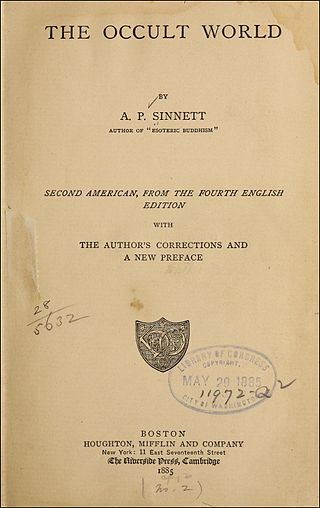
The Occult World is a book originally published in 1881 in London; it was compiled by a member of the Theosophical Society A. P. Sinnett. It was the first theosophical work by the author; according to Goodrick-Clarke, this book "gave sensational publicity to Blavatsky's phenomena" and the letters from the mahatmas, and drew the attention of the London Society for Psychical Research.
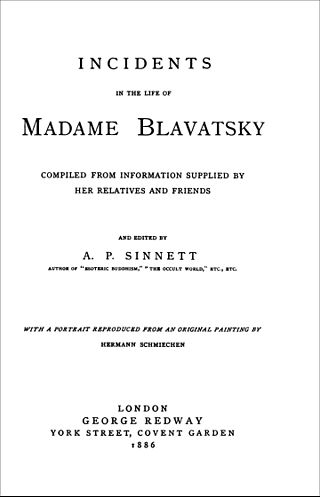
Incidents in the Life of Madame Blavatsky: compiled from information supplied by her relatives and friends is a book originally published in 1886 in London; it was compiled by a member of the Theosophical Society, A. P. Sinnett, who was the first biographer of H. P. Blavatsky. Sinnett describes the many unusual incidents in Blavatsky's life beginning from her childhood in Russia, and asserts that Blavatsky had "an early connection with the supernatural world;" Sinnett also writes about Blavatksy's short, unlucky marriage and "decade of extensive global travels," about her period of learning in Tibet, and the "criticism she received about some of her 'phenomena' and practices."

Mohini Mohun Chatterji was a Bengali attorney and scholar who belonged to a prominent family that for several generations had mediated between Hindu religious traditions and Christianity. He joined the Theosophical Society in 1882 and became Assistant Secretary of the Bengal branch. Later that year, he claimed he became a "chela" in probation of the Mahātmā Koot Hoomi, and saw apparitions of Mahatmas on five or six occasions. According to Theosophists, he eventually failed as a chela, and resigned from the Theosophical Society in 1887, after only five years of membership.
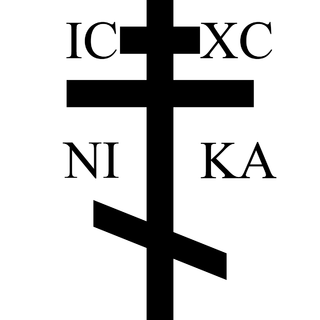
Christianity and Theosophy, for more than a hundred years, have had a "complex and sometimes troubled" relationship. The Christian faith was the native religion of the great majority of Western Theosophists, but many came to Theosophy through a process of opposition to Christianity. According to professor Robert S. Ellwood, "the whole matter has been a divisive issue within Theosophy."











